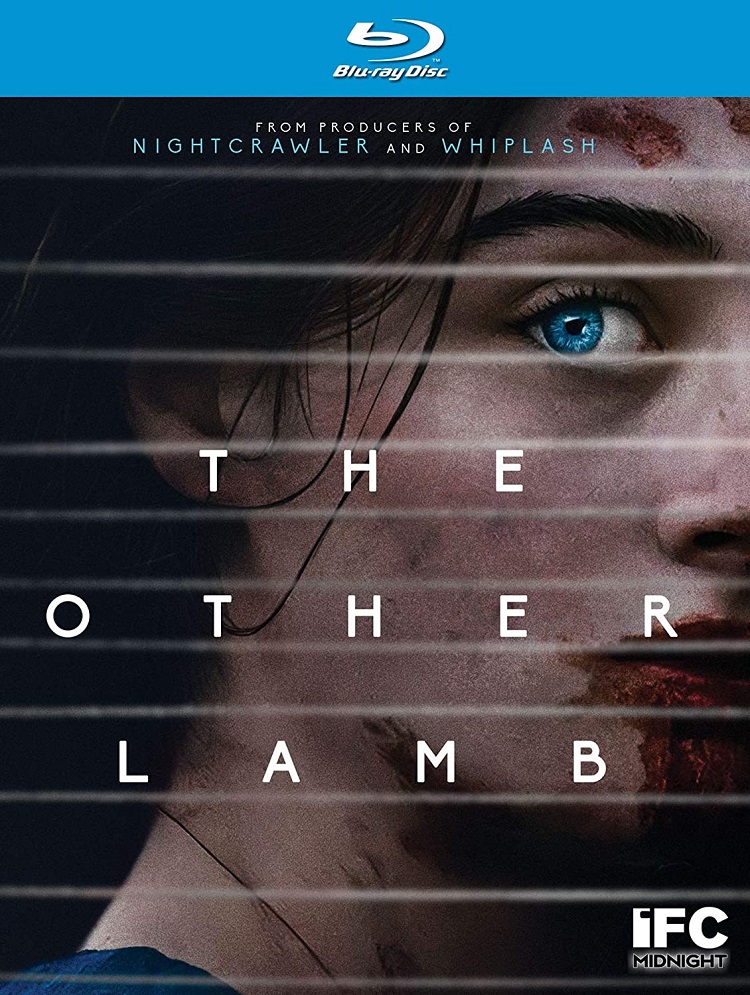
The Other Lamb follows the journey of Selah (Raffey Cassidy), a girl who was born into an all-female cult called The Flock led by a man known only as Shepherd (Michael Huisman). But once the police visit their commune in the woods far from civilization, Selah suddenly starts questioning both her place within the cult and Shepherd’s ulterior motives.
Selah’s journey of self-discovery ends up becoming an amalgam of classic ’70s religious horror films. With its storyline involving an insidious cult, The Other Lamb is almost like The Wicker Man but strictly from the cult’s point of view and without the titular statue. In addition, its plotpoint involving Selah getting her period, which is viewed as unholy by Shepherd and the other women, draws slight similarities to Carrie. The hazy, grainy cinematography by Michal Englert also helps maintain the film’s ’70s aesthetic as it continuously zooms in and out of the actors’ faces.
The masterful costume design by Katarzyna Lewinska is another highlight as it makes the place that the Flock calls home feel like its own world. With Shepherd’s romantic partners known as his “wives” wearing red dresses and their daughters wearing blue, it becomes clearer to tell what relation the women have with Shepherd and the level of hierarchy that each color possesses.
Going back to the screenplay by Catherine S. McMullen, its ’70s homaging does make the film a nostalgic experience. But, the script still works best when it becomes an exaggerated yet original coming-of-age tale. A grim depiction of a teenager questioning whether she feels at home as she ascends into womanhood. Adolescence is indeed a scary time in a person’s life and the filmmakers try giving the picture a literal fright factor with its sinister cult plot and blood-soaked hallucinations that Selah experiences. Visions that result in the film nearly being style over substance.
Its intriguing script ideas almost become overshadowed by its emphasis on hallucinations and drawn-out sequences focused on the scenic woods accompanied by a booming score. Additionally, as The Other Lamb uses the titular animal as a metaphor for the innocence of the women under Shepherd’s influence, it gets as subtle as a jackhammer. The aforementioned cinematography gives the movie plenty of visual flair, but it would’ve been beneficial if we looked a little deeper into the hellscape that Selah has called home.
As a result of The Other Lamb being a lucid nightmare, it becomes yet another entry in lead actress Raffey Cassidy’s ongoing series of bleak arthouse fare that includes The Killing of a Sacred Deer and Vox Lux. Cassidy proves to be an astounding screen presence as she captures Selah’s doubtful curiosity about the outside world and gradual resistance with just her eyes. Denise Gough is similarly effective as the pragmatic Sarah, one of Shepherd’s wives who forces Selah to come to her senses.
Along with the otherworldly costumes and allegorical handling of adolescence, Raffey Cassidy’s central performance ends up salvaging greatness out of The Other Lamb. It nearly joins the pantheon of great cult horror pictures such as Midsommar and The Wicker Man. But, its drastic script issues are what hold it back from achieving the same stature.